Japanese Covered Bridge in Hoi An: History, Architecture, and Travel Guide
The Japanese Covered Bridge, also known as Chua Cau, is the most iconic architectural landmark of Hoi An. Built over 400 years ago during the town’s prosperous trading era, it reflects a unique blend of Japanese, Chinese, and Vietnamese design. This complete guide will help you explore its history and architecture, and make the most of your visit to this famous bridge.
History and cultural significance
Bridge architecture
Visitor guide
FAQs
Dear reader, every photo and video you see in this post was taken by us. This article may contain affiliate links—if you find something helpful and decide to make a purchase, it supports our work at no extra cost to you. Thank you for being here!
History and cultural significance
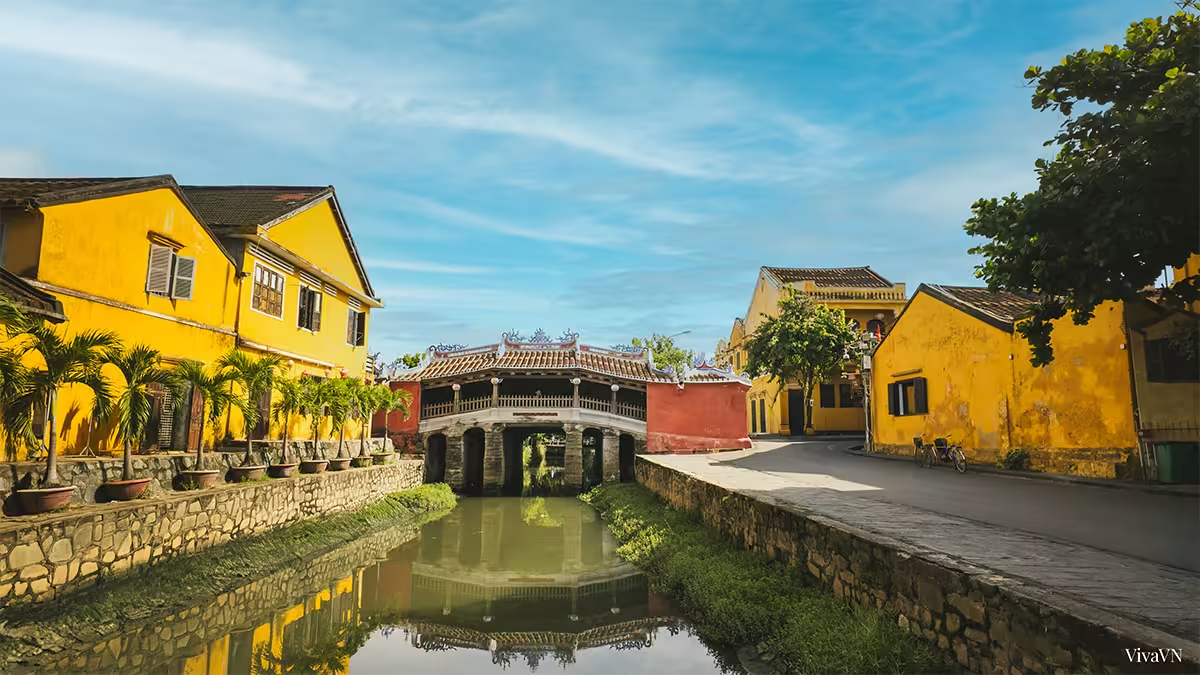
The Japanese Covered Bridge spans a small waterway in Hoi An, surrounded by the town’s signature yellow-walled houses
Back in the 16th century, Hoi An was one of the busiest international trading ports in Southeast Asia. Ships from Japan, China, and even Europe anchored here, turning the town into a true cultural crossroads. Among the many foreign merchants, the Japanese and the Chinese were especially influential. They didn’t just trade goods; they also left behind lasting marks on the town’s architecture and cultural identity.
Temples, assembly halls such as the Fujian Assembly Hall, shophouses, and family homes began to appear, many of which still stand today. But perhaps the most iconic structure of all is the Japanese Covered Bridge. Thought to have been built in the late 16th or early 17th century, the bridge was funded by Japanese merchants and crafted by Vietnamese carpenters. Later, when the Japanese community declined, Chinese merchants took over its care and added a small temple at the back of the bridge.
The mix of Japanese, Chinese, and Vietnamese influences is what makes the bridge stand out. More than just a way to cross the water, it reflects Hoi An’s history as a place where different cultures came together.
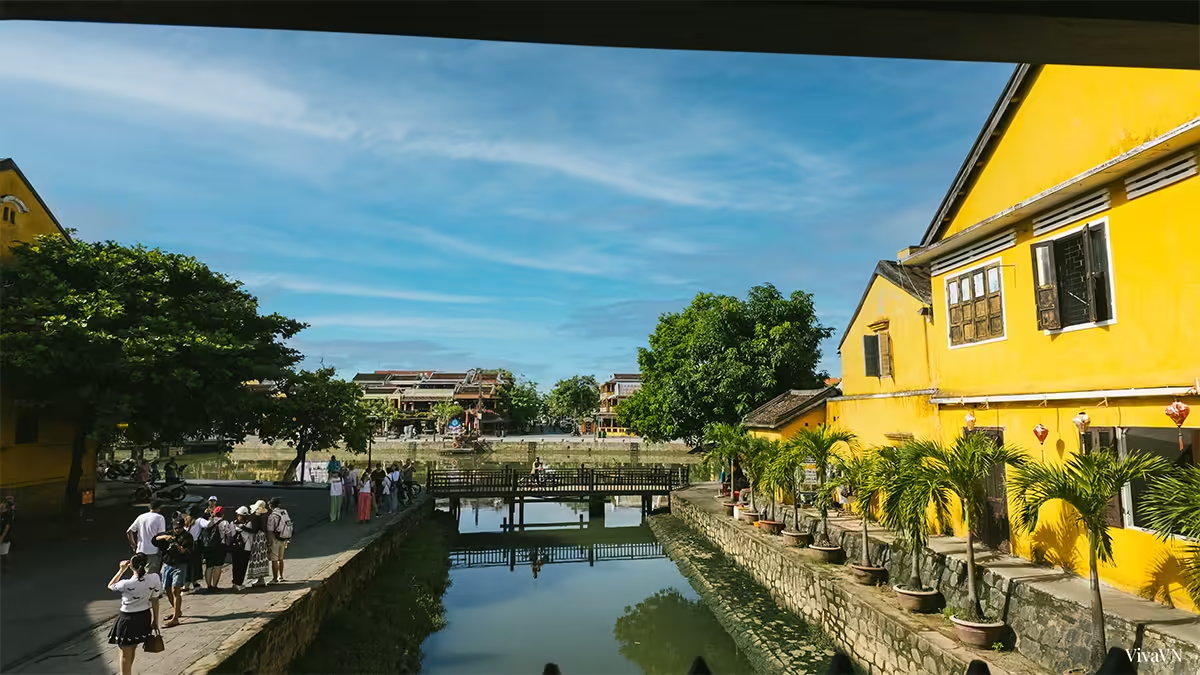
From the Japanese Covered Bridge looking out to the Hoai River
Architecture of the Japanese Covered Bridge
The Japanese Covered Bridge is about 18 meters long, a little over 10 meters wide including the small temple, and around 6 meters high. Its structure is mainly divided into two parts: the wooden bridge with its tiled roof, and a small temple attached to the bridge.
The wooden bridge and its tiled roof
The bridge is mainly wooden, its floorboards, beams, and pillars carefully crafted and fitted together. Above, a tiled roof provides shade and shelter, turning the bridge into more than just a walkway. The entire structure is supported by stone pillars rising from the water below.
The roof is covered with traditional tiles similar to those found on Vietnamese temples and pagodas. Along the roofline are porcelain decorations featuring dragons, phoenixes, and cloud motifs.
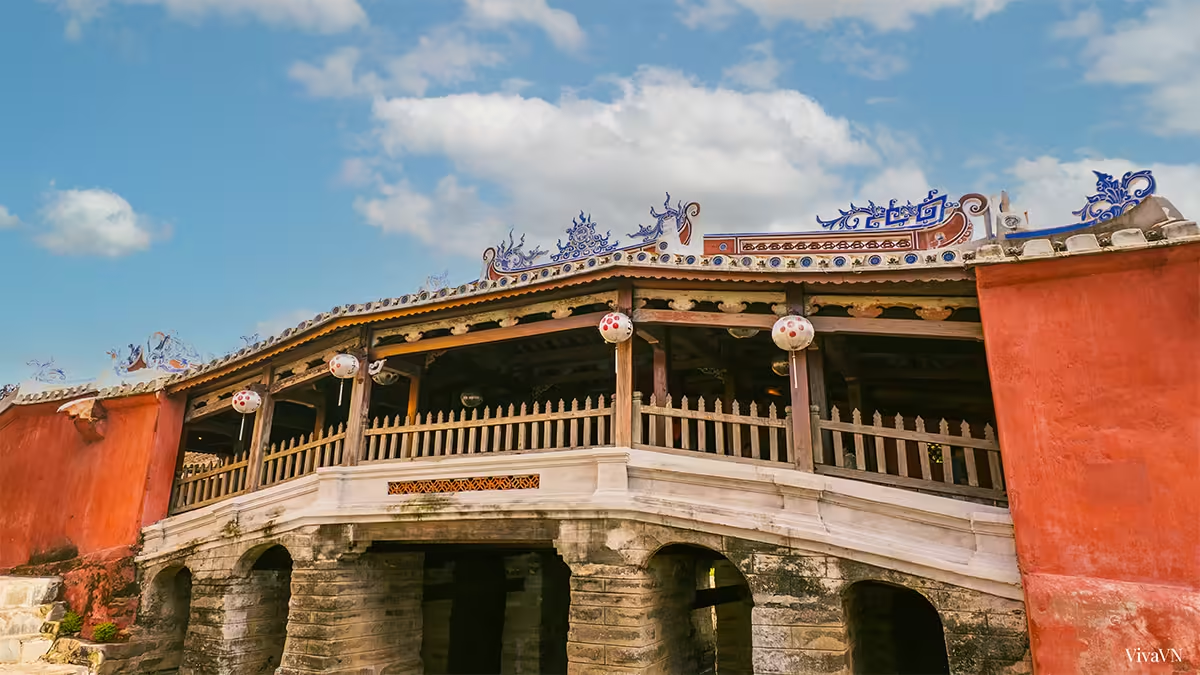
The facade of the Japanese Covered Bridge
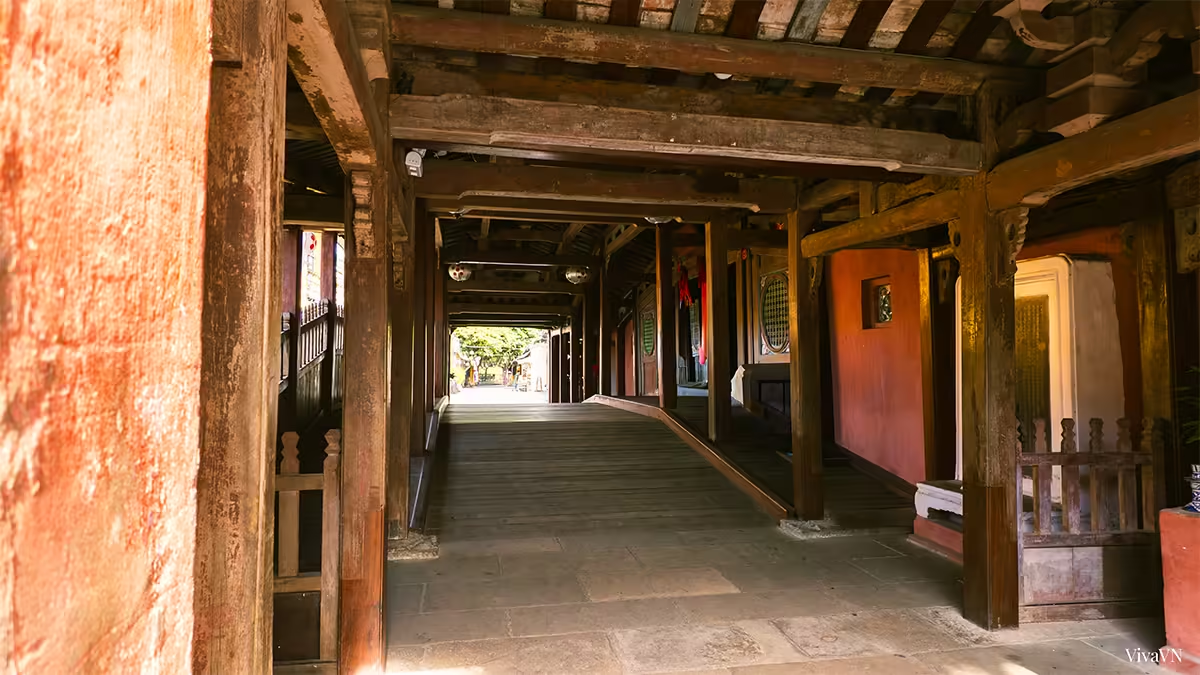
Inside the Japanese Covered Bridge, with its wooden floorboards, beams, and pillars.
At both ends of the Japanese Covered Bridge, you’ll see statues of a pair of dogs and a pair of monkeys. The exact purpose of these statues isn’t entirely clear. Some say they mark the years the bridge was started and completed, since the dog and the monkey are zodiac animals in the Vietnamese lunar calendar. Others believe they carry spiritual significance in Japanese culture.
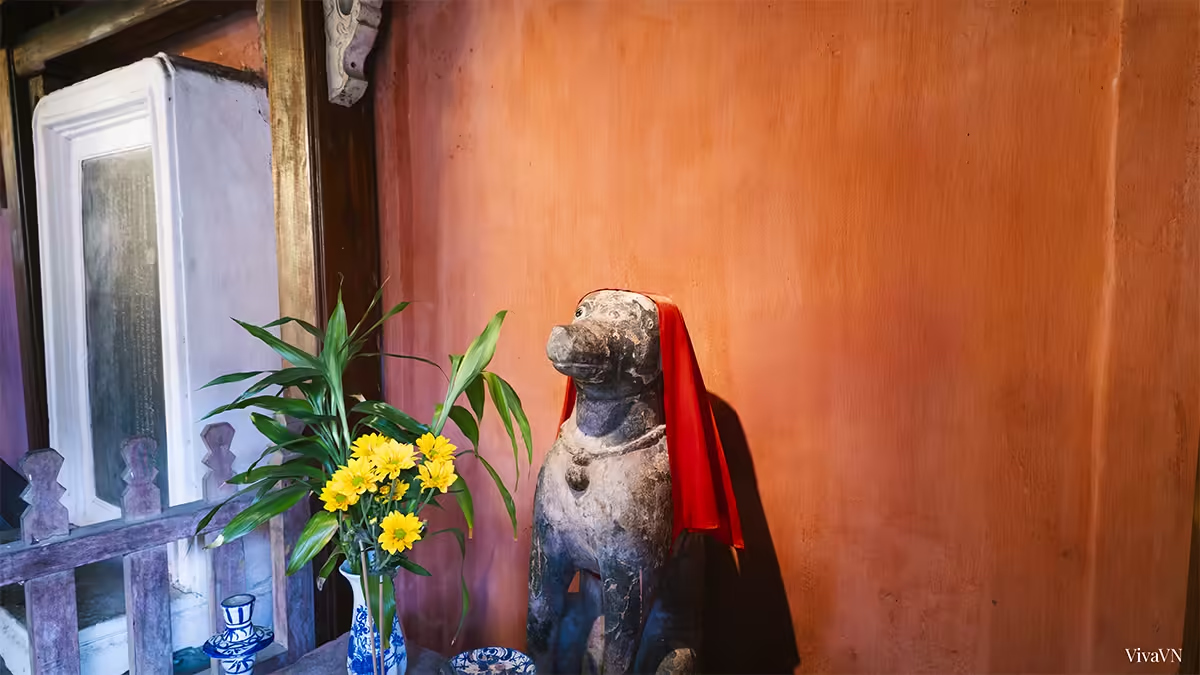
Dog statue at one end of the Japanese Covered Bridge
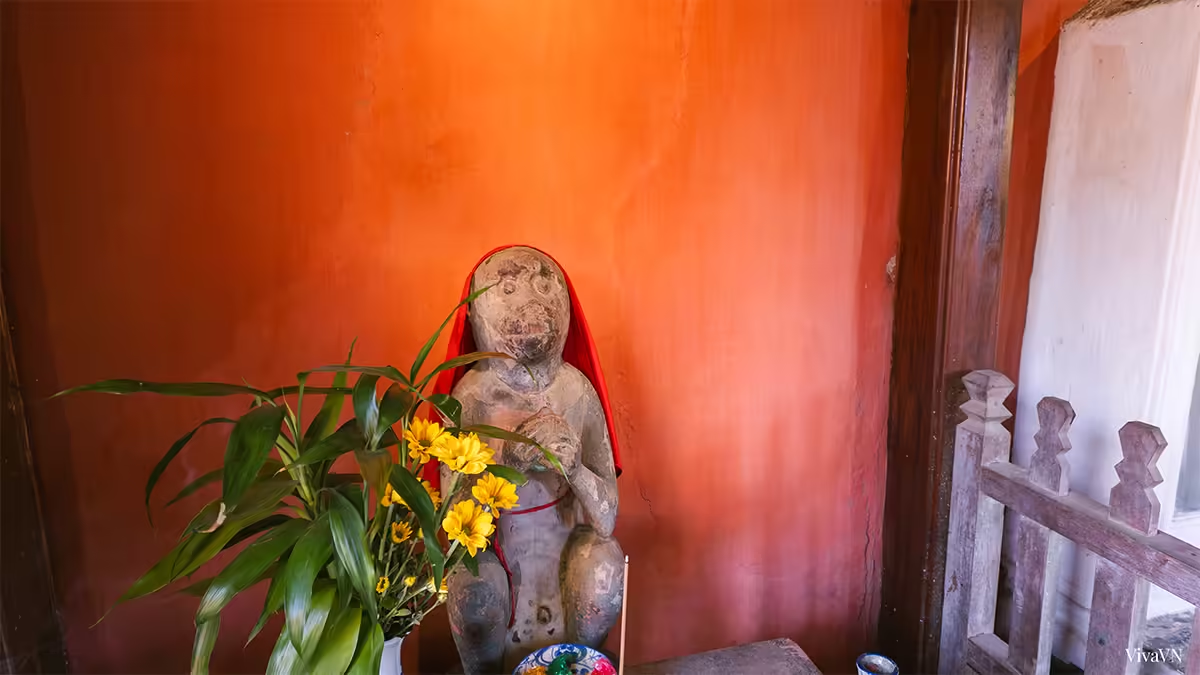
Monkey statue at the Japanese Covered Bridge.
The temple on the bridge
When the Japanese traders left Hoi An, the Chinese community took over the bridge and later added a small temple at its back.
Above the entrance of the temple, you’ll see a plaque with three Chinese characters. This is the official name of the bridge, given by Lord Nguyen Phuc Chu during his visit in 1719. The name means “the bridge welcomes travelers from afar.”
Just below the plaque are two round wooden blocks, known locally as “door eyes.” Common in old Hoi An houses, they’re believed to greet good guests while keeping away unwanted spirits.
Inside the temple, you’ll find an altar dedicated to the Northern God, a Taoist deity believed to bring peace and protection to the local community. During the full moon festivals and Vietnamese New Year, locals come here to offer incense, showing their respect and devotion while asking for blessings from the deity.
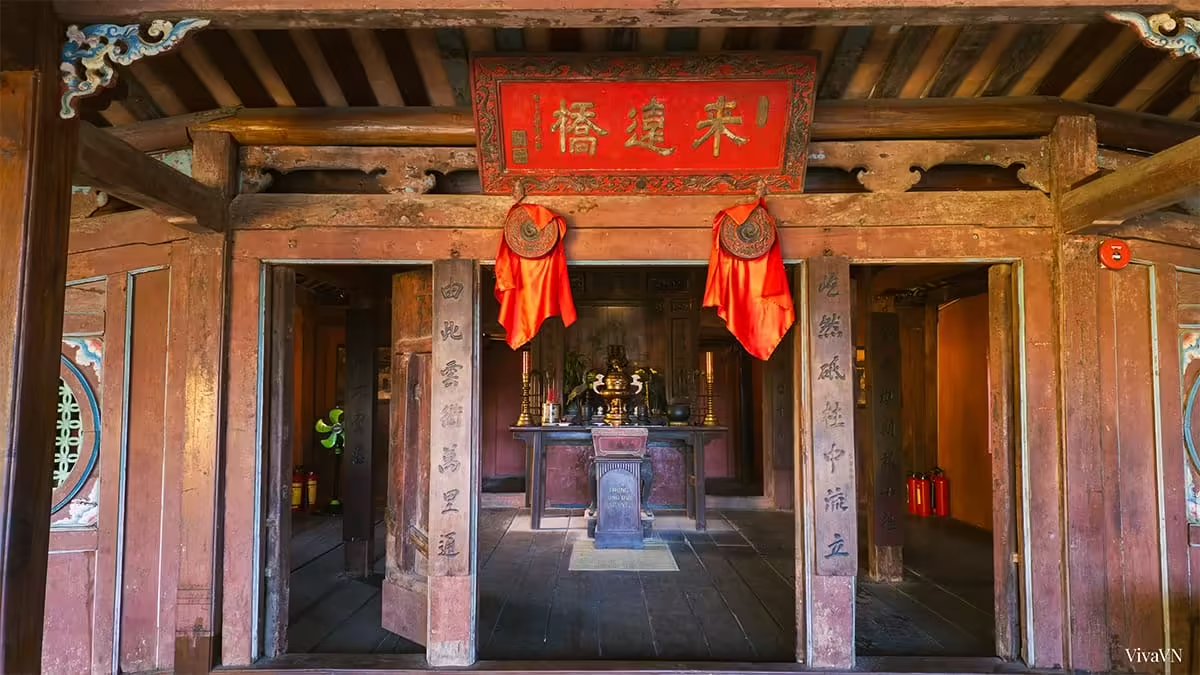
The temple with three doorways, a name plaque, and round ‘door eyes’.
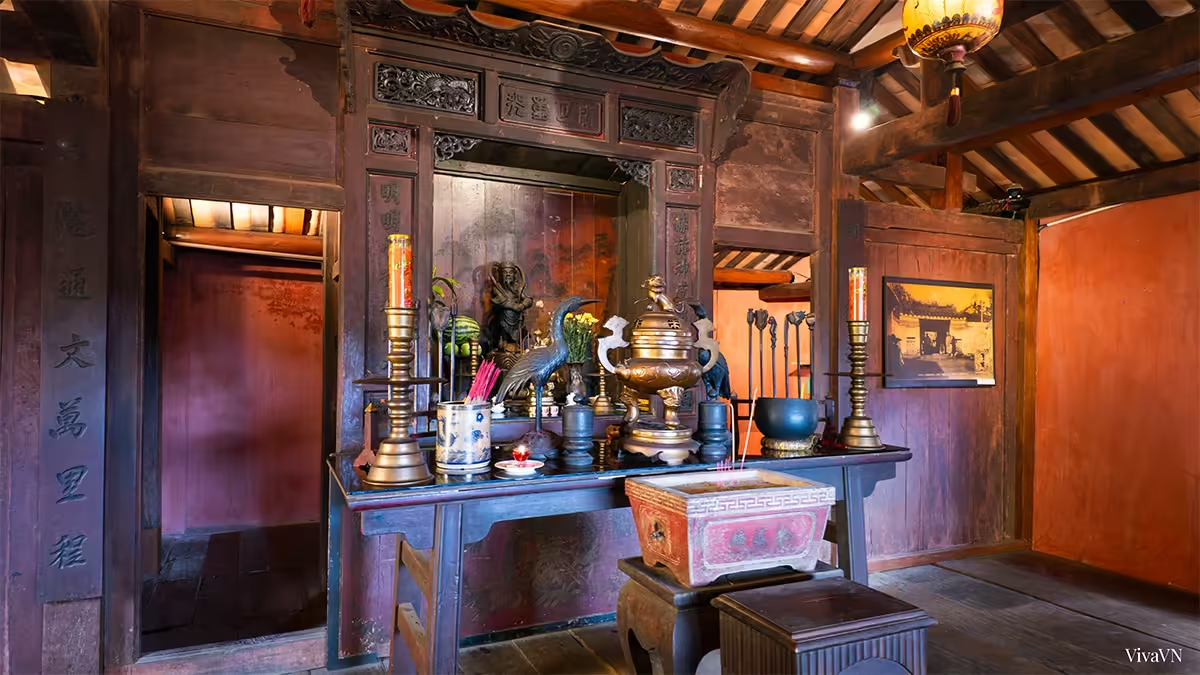
Altar to the Northern God inside the temple
Everything you need to know before visiting the Japanese Covered Bridge
Address: At the end of Tran Phu Street, Hoi An Ancient Town.
Opening hours: 9:00 AM – 10:00 PM daily
Tickets: You’ll need a Hoi An Ancient Town entrance ticket (120,000 VND, about 5 USD per person). This ticket gives you access to five attractions of your choice, which can include assembly halls, old houses, museums, and temples. Tickets are sold at official booths scattered around the old town.
Our tip: Visit before 8:00 AM when the Japanese Covered Bridge is still quiet with very few visitors. This is the best time to enjoy the atmosphere and capture great photos without the crowds.
Note: You can actually walk across the bridge at any time of day without showing a ticket. The ticket is only required if you’d like to step inside the small temple on the bridge.
Frequently asked questions about visiting the Japanese Covered Bridge
Do I need a ticket to visit the Japanese Covered Bridge?
Yes, you’ll need a Hoi An Ancient Town entrance ticket (120,000 VND, about 5 USD), which includes access to the bridge and four other attractions of your choice.
What are the opening hours of the Japanese Covered Bridge?
It’s officially open from 9:00 AM to 10:00 PM daily, but you can walk by and see it from outside at any time.
How old is the Japanese Covered Bridge?
The bridge was built more than 400 years ago, around the late 16th or early 17th century, during Hoi An’s golden age as a trading port.
Why is it called the Japanese Covered Bridge?
Because it was originally built by the Japanese trading community in Hoi An. Later, the Chinese community added a small temple to it.
Can you take photos inside the Japanese Covered Bridge?
Yes, photography is allowed both inside and outside the bridge. Early morning gives the best light and fewer people.
Share on FacebookShare on X (Twitter)Share on PinterestShare on WhatsappShare on LinkedinShare on TelegramShare on Email
- https://www.youtube.com/@VivaVNOfficial
- https://www.facebook.com/vivavnofficial2024
- https://www.pinterest.com/vivavnofficial/
© 2025 VivaVN. All rights reserved.

Leave a Reply